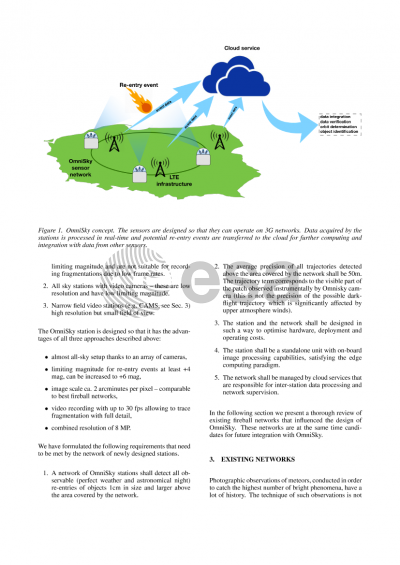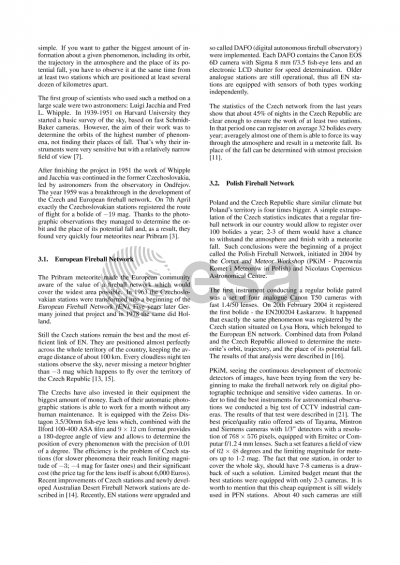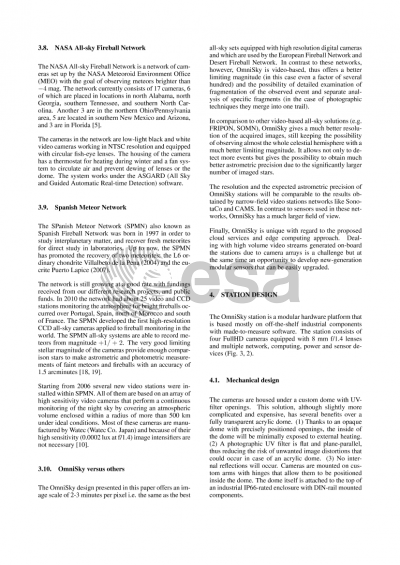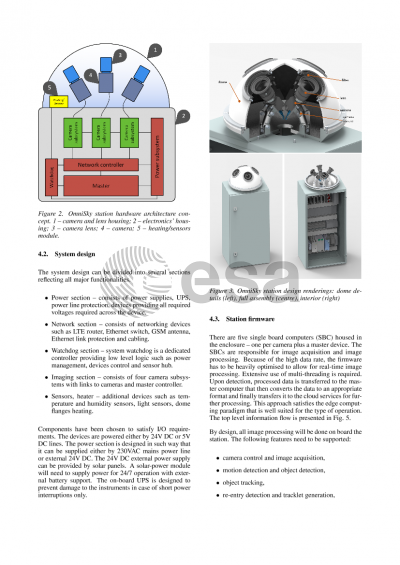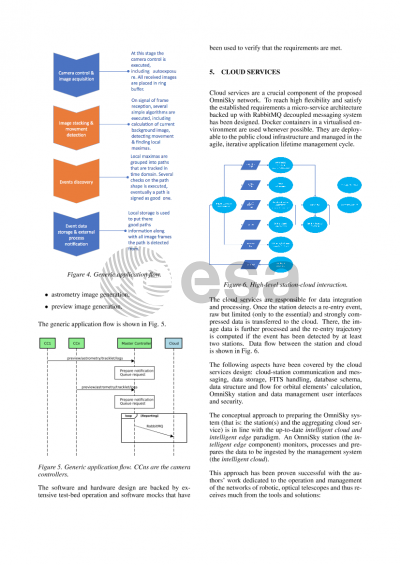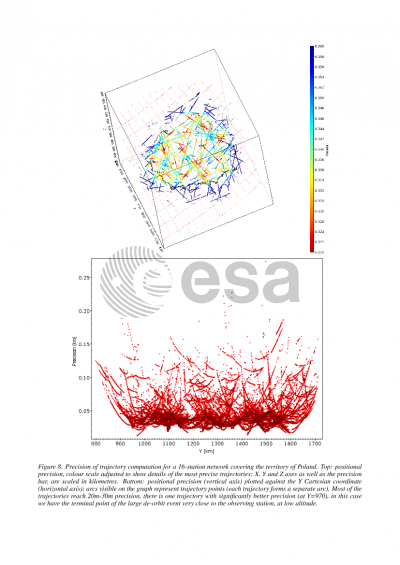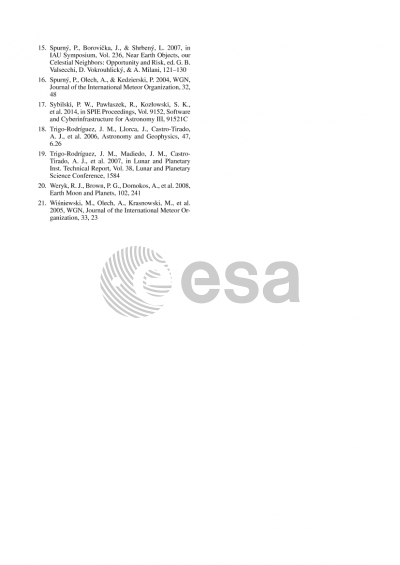Document details

Abstract
Approximately 400 man-made objects of size larger than 10 cm re-enter the Earth’s atmosphere every year – the majority of these are never observed. Typically, the only way we know that they are no longer in orbit is because they are not observed anymore in an expected location at a given time. OmniSky is a concept network of multi-camera sensors that are designed to detect re-entries of objects larger than 1 cm over an area covered by a grid of observing stations. Based on extensive simulations, including a realistic in-orbit population model and historical weather data, we have estimated that a 16-station network covering roughly the area of Poland will detect 4.6 re-entry events per year. Various hardware and on-board software approaches have been considered during the design and feasibility study phase. The resulting network will be integrated into one system by the means of tailored cloud services. The need of detecting and characterizing re-entry events is justified by the requirements of space commercialisation, satellite mega-constellations, space law evolution and the emerging market of space insurances. Additionally, a single OmniSky station is a versatile tool that can be used for other complementary activities, also during the day: weather monitoring (including cloud detection for solar farms), environmental monitoring (e.g. forest fires, bird migration), drone observing, amateur astronomy, night-time cloud detection for astronomical observatories.
Preview

